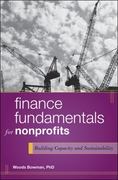Mutt.Com was founded in 2006 by two graduates of the Univer- Georgina Sloberg, who had built es. Mutt.Com's user-friendly system was designed to find buyers for unwanted pets. Within 3 years the company was generating rey- enues of $3.4 million a year and, despite racking up sizable losses. was regarded by investors as one of the hottest new e-commerce businesses. The news that the company was preparing to go public therefore generated consid The company's entire equity capital of 1.5 million shares was owned by the two founders and Ms. Sloberg. The initial public offering involved the sale of 500,000 shares by the three existing shareholders, together with the sale of a further 750,000 shares by the company in order to provide funds for expansion The company estimated that the issue would involve legal fees, auditing, printing, and other expenses of $1.3 million, which would be shared proportionately between the selling shareholders and the company. In addition, the company agreed to pay the underwriters a spread of $1 per share this cost also would be shared). The roadshow had confirmed the high level of interest in the issue, and indications from investors suggested that the entire issue could be sold at a price of $24 a share. The underwriters, however, cautioned about being too greedy on price. They pointed out that indications from investors were not the same as firm orders. Also, they argued, it was much more important to have a successful issue than to have a group of disgruntled shareholders. They therefore suggested an issue price of $18 a share. That evening Mutt.Com's financial manager decided to run through some calculations. First, she worked out the net receipts to the company and the existing shareholders assuming that the stock was sold for $18 a share. Next, she looked at the various costs of the IPO and tried to judge how they stacked up against the typical costs for similar IPOs. That brought her up against the question of underpricing. When she had raised the matter with the underwriters that morning, they had dismissed the notion that the initial day's retum on an IPO should be considered part of the issue costs. One of the members of the underwriting team had asked: "The under- writers want to see a high return and a high stock price. Would Mutt.Com prefer a low stock price? Would that make the issue less costly?" Mutt.Com's financial manager was not convinced but felt that she should have a good answer. She wondered whether under- pricing was only a problem because the existing shareholders were selling part of their holdings. Perhaps the issue price would not matter if they had not planned to sell. Mutt.Com was founded in 2006 by two graduates of the Univer- Georgina Sloberg, who had built es. Mutt.Com's user-friendly system was designed to find buyers for unwanted pets. Within 3 years the company was generating rey- enues of $3.4 million a year and, despite racking up sizable losses. was regarded by investors as one of the hottest new e-commerce businesses. The news that the company was preparing to go public therefore generated consid The company's entire equity capital of 1.5 million shares was owned by the two founders and Ms. Sloberg. The initial public offering involved the sale of 500,000 shares by the three existing shareholders, together with the sale of a further 750,000 shares by the company in order to provide funds for expansion The company estimated that the issue would involve legal fees, auditing, printing, and other expenses of $1.3 million, which would be shared proportionately between the selling shareholders and the company. In addition, the company agreed to pay the underwriters a spread of $1 per share this cost also would be shared). The roadshow had confirmed the high level of interest in the issue, and indications from investors suggested that the entire issue could be sold at a price of $24 a share. The underwriters, however, cautioned about being too greedy on price. They pointed out that indications from investors were not the same as firm orders. Also, they argued, it was much more important to have a successful issue than to have a group of disgruntled shareholders. They therefore suggested an issue price of $18 a share. That evening Mutt.Com's financial manager decided to run through some calculations. First, she worked out the net receipts to the company and the existing shareholders assuming that the stock was sold for $18 a share. Next, she looked at the various costs of the IPO and tried to judge how they stacked up against the typical costs for similar IPOs. That brought her up against the question of underpricing. When she had raised the matter with the underwriters that morning, they had dismissed the notion that the initial day's retum on an IPO should be considered part of the issue costs. One of the members of the underwriting team had asked: "The under- writers want to see a high return and a high stock price. Would Mutt.Com prefer a low stock price? Would that make the issue less costly?" Mutt.Com's financial manager was not convinced but felt that she should have a good answer. She wondered whether under- pricing was only a problem because the existing shareholders were selling part of their holdings. Perhaps the issue price would not matter if they had not planned to sell







